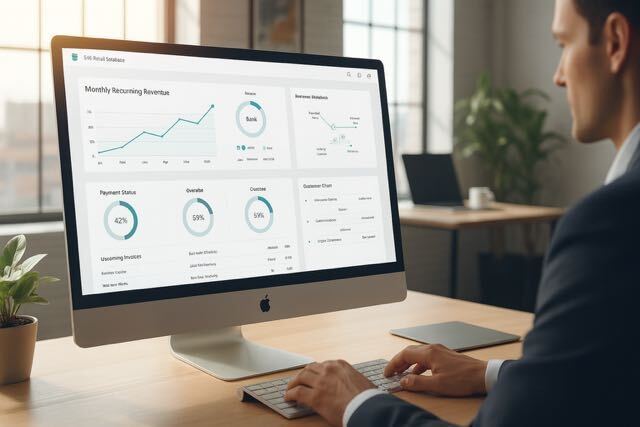4 Partner Relationship Management Best Practices to Follow

Optimize your partner relationships with PRM best practices. Our blog provides a comprehensive guide to building strong partner programs, fostering collaboration, and achieving mutual success.
Besides being high-profile, successful enterprises, Amazon, HubSpot, Microsoft, Oracle, and eBay have something else in common. They’ve invested in their partner programs with steadfast commitment to increase their partner revenue. In fact, 95% of Microsoft’s revenue comes from its channel partners.
If you are responsible for building a partner program at your company, follow these industry best practices to establish a robust and attractive partner relationship management (PRM) program.
#1. Build a Comprehensive Partner Roadmap
Successful execution of your PRM strategy starts with building a comprehensive partner roadmap. This roadmap serves as your guide throughout the partner lifecycle, from initial engagement to post-sale support.
To help you build your partner roadmap, we’ve broken down the process into four steps:
- Define your goals. You need to know your goals. What are you trying to achieve through your PRM strategy? After you clearly understand your goals, you can map out the steps you need to achieve them.
- Identify your partners. Identify which partners are essential to your PRM strategy. When you have your list, categorize them based on their level of importance and potential.
- Define your criteria. Now that you know who your partners are and what you’re trying to achieve, define your criteria for success. Outline the metrics you’ll use to measure success. Also, define the must-haves for each partner.
- Put it all together. Put everything together and create your partner roadmap. To start, map out the lifecycle of a partner, from initial engagement to post-sales support. Then fill in the details of each stage, including the goals you want to achieve and the steps you need to reach them.
Further Reading: Maximize Revenue Using These 4 Channel Partner Strategies
#2. Add Integrations for Better Partner Experience
If you use a PRM platform, make sure it works seamlessly with your existing technology stack. Having an integrated PRM with automation has the following benefits:
- Increased efficiency and productivity: PRM automation helps streamline your processes and eliminate manual tasks, resulting in increased efficiency and productivity. When your processes are more efficient, your partners can work more effectively, leading to improved results.
- Improved data quality: Integrating your PRM system with other business applications helps ensure your data is accurate and up-to-date. Accurate data is critical to ensuring you and your partners make sound business decisions.
- Increased partner satisfaction: When your PRM processes are more efficient and have higher quality data, your partners are more satisfied. And their satisfaction means improved relationships and increased business opportunities.
- Greater insight into your partner relationships: Automation and integration give you greater visibility into your partner relationships. This insight helps you identify areas for improvement and make decisions to strengthen your relationships.
- Improved decision-making: With better data and insight into your partner relationships, you can make more informed decisions about your PRM strategy. This ability helps you allocate resources more effectively and make decisions that will positively impact your business.
#3. Create a Robust Partner Onboarding Strategy
As a business, having a solid onboarding strategy is essential for managing your partner relationships. After all, your partners are a key part of your success.
A successful onboarding program gives your partners a strong start and can be a key element in building long-lasting relationships with your partners. The onboarding framework for a robust channel partner program can positively influence your partners’ performance and productivity. For channel managers, it ensures compliance with internal policies and external protocols and reduces transactional workloads on your teams.
The most important component of an onboarding framework is a partner welcome kit. This kit should contain essential information to help your partners understand your business, products, services, and goals. Consider giving them a tutorial on how to interact with your partner portal. The training reinforces newcomers’ positive first impression and limits the number of one-off questions you have to answer.
Create your partner welcome kit with the following items to start:
- An overview of your business and what you do.
- An introduction to your team and key contact information.
- A partner manual or guide that outlines your partner portal.
- A document that outlines all expectations and outcomes.
- Any relevant marketing materials or collateral.
- A welcome letter from you or your team.
Download Template | Channel Partner Onboarding Template
The welcome kit also gives you an opportunity to set clear expectations for your partner relationship. Make sure your partners clearly understand what you expect from them and what they can expect from you through the partnership to avoid misunderstandings and conflicts later. Update them often on your plans and objectives, and solicit their feedback regularly. Remember, communication is key.
By taking the time to put together a welcome kit for your new partners, you demonstrate your investment in and commitment to their success. It also sets you up to build a firm foundation for a prosperous partnership.
Further Reading: 7 Key Components of Channel Partner Onboarding
#4. Develop a Partner Incentive Program
Finally, show your appreciation for your partners. A little recognition goes a long way in maintaining good relationships. One way is to offer rewards and incentives.
A reward program can have multiple facets. For example, you can offer financial incentives, exclusive access to new products or services, or simply show your appreciation through public recognition. Whatever form your program takes, rewarding your partners tells them you value their contributions and want to maintain a strong relationship.
Popular partner rewards include:
- Sales commissions
- Discounts and coupons
- Exclusive access to products or services
- Training and development opportunities
Of course, not all partners are motivated by the same things. That’s why you must take the time to get to know them and learn what incentives you can give them to continue selling on your behalf.
Follow these tips to help you build a successful partner reward program:
- Define your goals: Before designing your program, define what you hope to achieve with it. For example, do you want to increase sales from your partners, or do you want to strengthen your relationships with them? Clear goals help create a program that aligns with your PRM strategy.
- Identify the right rewards: Not all rewards are created equal. Carefully consider what will motivate your partners. Keep in mind:
• Your partners’ business goals
• Your partners’ personal preferences
• The cost of the rewards
- Make it easy to participate: The last thing you want is for your partners to find it difficult or time-consuming to participate in your program. Make sure you design a program that’s easy to understand and follow.
- Measure your results: Track the performance of your partner reward program to help you identify what’s working and what’s not.
By developing a well-run reward program, you’ll strengthen your relationships with your partners and encourage them to sell more of your products or services.
Drive Partner Revenue With For Vendors
To build and scale your partner program with partner-friendly solutions, start with Zomentum For Vendors. Zomentum For Vendors impacts and scales partner sales with an affordable, feature-rich solution that puts partners and revenue first. It integrates into your partners’ workflow, making it easy for them to recommend and sell your solutions. You become their favorite vendor by providing all the tools your partners need. Get started with Zomentum for Vendors.





.png)









